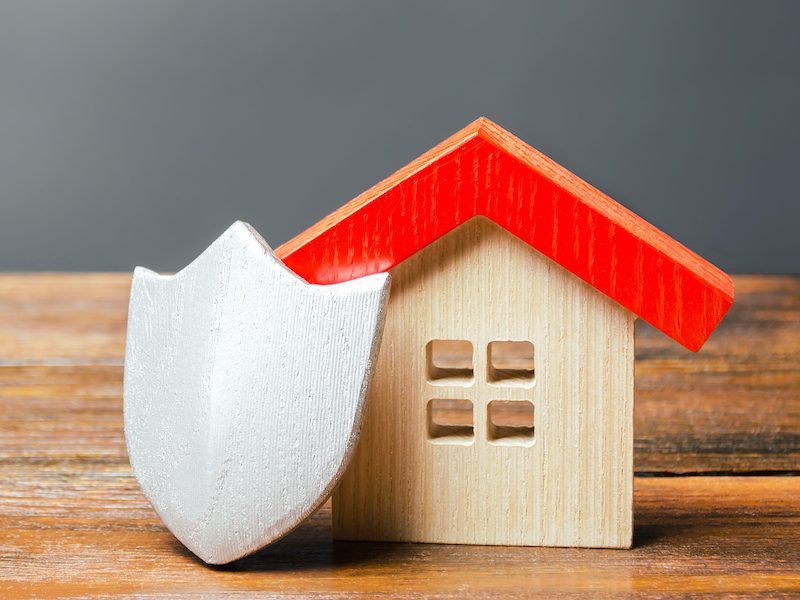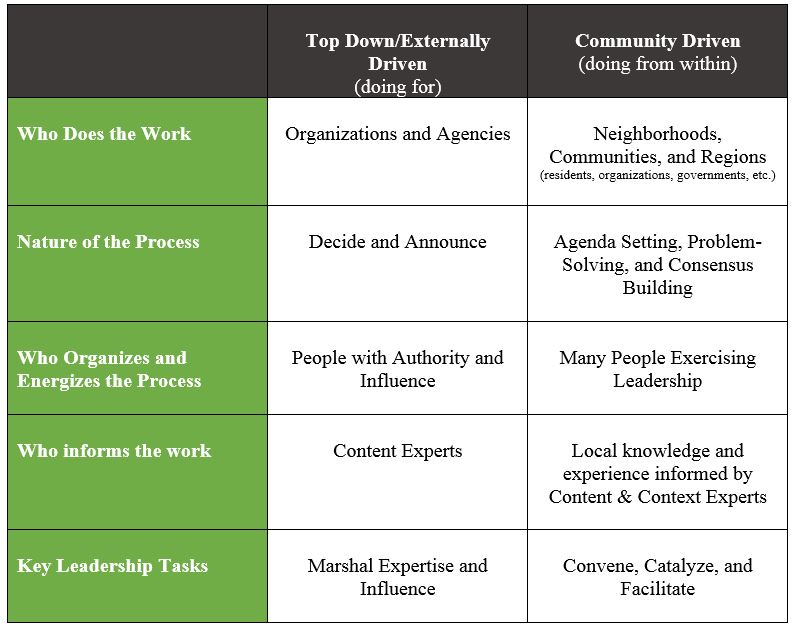
by David Chrislip
20 July 2020
Share:
As the coronavirus continues to devastate communities and regions around the world, planning for the aftermath is beginning to take center stage. As horrendous as the initial shock has been, it is but the first of many cascading impacts that must be addressed. Economic decline (collapse, in some places), increases in inequality in health and wealth, inadequate capacity of institutions to respond, failing health and education systems, and so on, will follow, rending the social fabric of families, communities, regions, and countries. Trillions of dollars will be allocated and spent by governments and foundations to address these challenges. Some places will be able to put these resources to good use. Others will become more dependent on outside entities (like governments and foundations) for their survival and less resilient in the face of future challenges. The longer-term response to the effects of this pandemic will be as important as the initial response to its manifesting symptoms.
Given the immensity of the damage and the colossal investment needed to repair it, ensuring that subsequent responses enhance the capacity – the resilience – of communities and regions to respond to future challenges and disruptions becomes imperative. An emerging definition of community resilience goes beyond merely coping with an external shock like the coronavirus and returning to the status quo ante. Radical theories see resilience as a dynamic process, not of bouncing back, but of reinvention and transformation. A systemic response is more powerful than a symptomatic one.
Economic decline (collapse, in some places), increases in inequality in health and wealth, inadequate capacity of institutions to respond, failing health and education systems, and so on, will follow, rending the social fabric of families, communities, regions, and countries.
This is adaptive work that involves power, politics, radical inclusion, authentic engagement, and mutual learning. Civic capacity brings these elements together to make progress. Those who study how communities and regions work know why some respond better than others to disruptions like the coronavirus: they are more resilient because they have greater civic capacity. This disaster offers an opportunity to enhance the civic capacity of communities and regions reclaiming the vital role of civic life in shaping future responses.
The Crucible of Change
Over the past two decades, there has been a distinct shift in thinking about where the impetus for adaptation and change should come from in neighborhoods, communities, and regions. Perhaps recognizing the limitations of top-down, externally-driven approaches, foundations, governments, and other civic actors now encourage and support community-driven responses to adaptive challenges such as health, education, housing, policing, and other public crises. Three premises inform this thinking about community-driven change:
- It is more effective in making lasting progress;
- It is more inclusive and egalitarian, therefore more democratic;
- Communities with the capacity for community-driven change are observably more resilient and responsive to disruptions and challenges.
At its best, community-driven change can be defined in terms of shared power between decision makers and community members, multiple perspectives on issues, strong participation from diverse people, a focus on the common good, and decision-making processes that are equitable, authentic, and transparent.

For many actors in the civic arena, community-driven change has become the preferred approach to transforming systems such as health care, education, and economic development. Over the past year, a panel of 34 experts from the U.S. and Canada, with conceptual and experiential expertise related to civic capacity, worked together to consolidate their knowledge and experience and create a broadly accepted definition of what community-driven change means and what it looks like in practice.
This work generated information about characteristics, qualities, and concerns of communities capable of fostering constructive responses to disruptions and challenges. For example, these communities intentionally confront systemic inequities and injustice. They couple an inclusive and engaging civic culture with institutions committed to community engagement. They keep a steady eye on the common good. Many people exercise leadership, some with positions of authority, many without. The leadership focus is on purposeful collaboration and mutual learning to make progress on issues of shared concern.
This understanding of community-driven change led to the development of a Civic Capacity Index (CCI), a measure of a community’s ability to make progress on complex, adaptive civic challenges (an initial version will be available in June 2020 for use in pilot applications). The CCI helps inform, shape, and evaluate intervention strategies from governments, foundations, and other civic actors.
As a diagnostic tool, the CCI can help policy makers understand the capacity of a community or region to absorb and manage resources directed towards recovery from the impacts of a disruption like the coronavirus. As a framework for community-driven change, the index can be used to design interventions that respond better to presenting challenges while enhancing the civic capacity – the resilience – of the community or region. Responses can be tailored to the civic capacity of a particular place. If, for instance, civic capacity is high, interventions may require less direction. If civic capacity is low, interventions may need to provide more guidance, technical assistance and expertise. Communities and regions can use the CCI as a place to start to assess and build their capacity for community-driven change. The index can track changes in civic capacity over time tying them to current actions. With the help of the community-driven change framework, civic actors can take advantage of existing civic capacity, understand where it is lacking, and build resilience for the future.
The Opportunity
Just as flattening the curve of the coronavirus in its initial stages takes leadership and concerted action, so too does creating a more resilient society. The coronavirus offers an opportunity to both mitigate the symptoms of this pandemic and to generate the ideas and political will to build a more just and equitable society. Realizing these aspirations takes civic capacity. Fulfilling them restores confidence in our collective capacity to respond to disruptions and challenges yet to come.
Key References
Briggs, Xavier de Souza (2008), Democracy as Problem Solving: Civic Capacity in Communities Across the Globe, Cambridge, MA: MIT Press.
Pares, Marc, Sonia M. Ospina and Joan Subirats (2017), Social Innovation and Democratic Leadership: Communities and Social Change from Below, Cheltenham, UK: Edward Elgar.

For over four decades, David Chrislip has worked to build civic capacity through civic leadership development and collaboration. His career has taken him from the National Outdoor Leadership School and Outward Bound to the American Leadership Forum, the National Civic League, and the Kansas Leadership Center. He is Principal of Skillful Means and Senior Fellow at the Kansas Leadership Center. He’s the co-author with Ed O’Malley of For the Common Good: Redefining Civic Leadership (KLC Press, 2013); co-author with Carl Larson, of Collaborative Leadership: How Citizens and Civic Leaders Can Make a Difference (Jossey-Bass, 1994); and author of The Collaborative Leadership Fieldbook (Jossey-Bass, 2002). David has been an active member of the ILA for over 20 years, has attended and presented at 10+ Global Conferences, and has been a member of Public Leadership member community for years.

